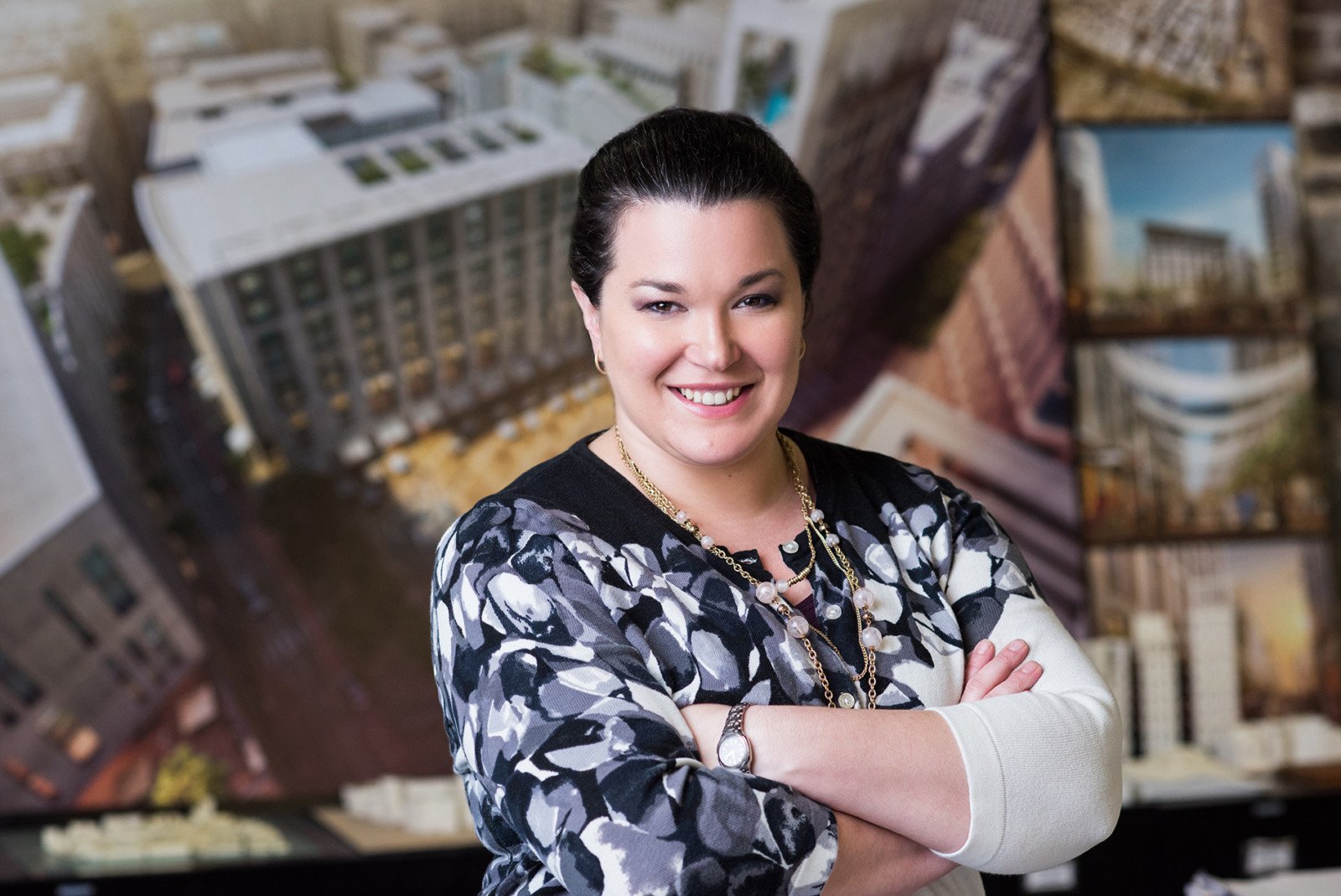The AIA interviewed Anica Landreneau, Assoc. AIA, LEED AP BD+C, HOK’s director of sustainable design, about energy efficiency and high-performance design.
What she’s also been blessed with is a firm that pursues sustainability from top to bottom; not only has HOK made the AIA’s 2030 Commitment, they also have a board-driven mandate to produce smart, beautiful buildings across their portfolio that meet an ever-climbing energy reduction target. Because, as Landreneau notes, practicing genuinely sustainable design requires no less than full, consistent dedication.
When I was in architecture school at the University of Houston, I started to learn about the impact of buildings on the environment. We’d hear facts like “75 percent of landfills are filled with demolition and construction debris.” I thought, “This is the profession I’m about to enter; this is my responsibility. If I don’t do something about it, who will?”
After school, I worked in a traditional role at a firm but became the green person, the green champion in the office. I started to educate colleagues on sustainability and helped them prepare for LEED exams. Then, when I moved to Washington, D.C., I took a job at a climate policy think tank. At that time there were more architects interested in green design than actual clients who wanted green buildings. But around that time, a lot of exciting legislation started being passed: the Energy Policy Act of 2005, the DC Green Building Act of 2006, the Energy Independence and Security Act of 2007. They all had requirements for green and high-performance buildings; suddenly, there was this demand for expertise and knowledge in sustainability. I was able to create a full-time job with that focus at an architecture firm.
When I came out of school and entered the profession, everybody said, “It’s really cute that you want to focus on green buildings, and it’s very noble; I don’t think you’ll ever find a job.” Around that time, however, it became less “green building because it feels good” and more “I have to achieve this, whether I’m being incentivized or not.” It was a whole set of new project requirements that we’re contractually obligated to fulfill, and there are real problems if we don’t. It started to be integrated in the same way as having someone on staff who focuses on life safety or ADA consulting, specifications, or lab planning and medical planning; when something becomes an area of expertise that is valuable to clients, you find people to specialize in it.
“We do not rely on clients to tell us to design a high-performance building; we are going to do it anyway, it’s our job.”
My role isn’t to do sustainable design for anyone; it’s to optimize all projects across the firm. It’s a mission that our board has committed to. What we discovered in 2013 was that our firm wasn’t performing at AIA’s 2030 Commitment average. We realized we weren’t disciplined across the firm, so we put our foot down. At our board meeting in 2013, we set a 40 percent reduction target and said, “We’re going to hit it.” In 2014 our target was 45 percent, and we hit it. In 2015, we hit 50 percent. In 2016, we hit 55 percent. And this year, we’re at 60 percent and we’re going to hit that too.
One thing we’ve found, through our firm-wide commitment to sustainability, is that in studios where the clientele was less interested in sustainability—and where it’s not legislated—there is less client drive to pursue sustainable design, which is why it’s so important for architects to take a leadership role. We also found that giving architects the tools to set targets and benchmark against them has raised their improvement against the 2030 baseline significantly, in some of our studios from 25 percent to 55 percent savings. It’s huge; giving them that power and opportunity has been tremendously impactful. We always recommend more robust modeling with engineers in an interactive and collaborative way, but when you have nothing else it’s important for architects to benchmark so they’re not working in the dark.
We do not rely on clients to tell us to design a high-performance building; we are going to do it anyway, it’s our job. If a client doesn’t come to us and say, “I want great design,” does that mean we’re allowed to give them something mediocre? We would never do that. Our clients expect us to lead them; they expect us to tell them what they need in terms of design and performance. They expect us to bring the best knowledge to their project; they don’t want to be an expert in something that’s not their business. Sometimes we even set targets without involving the clients at all. We set the targets, we communicate those targets to consultants, and we all work toward them. If the client doesn’t care, that’s fine. As long as we can balance our goals with the client’s program, schedule, and budget, there’s no reason for it to be disruptive. And if the client articulates an ambitious target that fits our design standard, even better.
This article originally appeared on the AIA’s website and is used here with permission.
